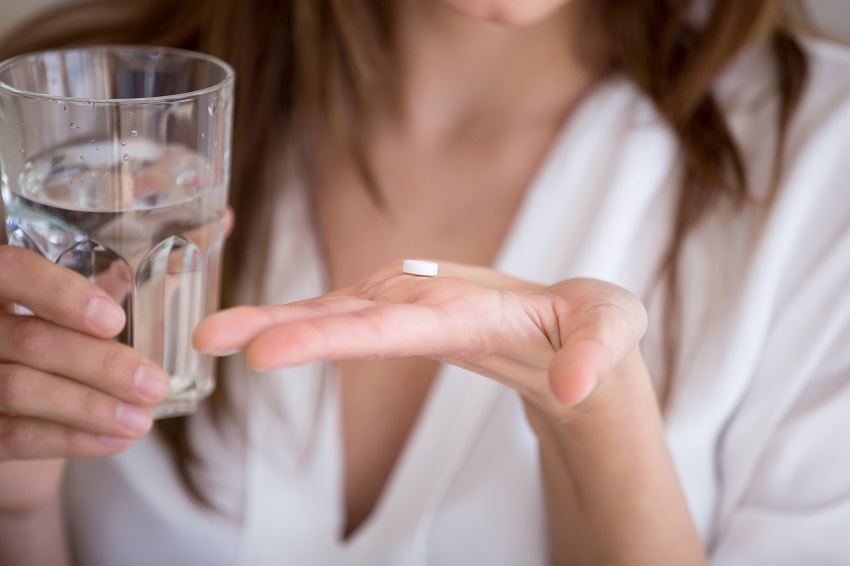
Antibiotics are a very important part of current medical treatment, but science is discovering the overuse can have unintended consequences that can impact gut health.
Antibiotics have saved millions of lives by reducing or removing pathogenic bacteria. However, we are now learning that overuse of antibiotics can have the unintended consequence of also reducing or removing resident bacteria that are important for gut health, as well as increasing the abundance of antibacterial resistance genes.
Antibiotic effects on the gut microbiome
Antibiotics come in many different forms. Some can target a wide range of bacteria (broad-spectrum) while others will target only a few types of bacteria (narrow-spectrum). Broad-spectrum antibiotics are the most commonly prescribed because often the microorganism causing an infection is unknown. Use of broad-spectrum antibiotics have been observed to have several impacts on gut health, including:
- reducing microbial diversity in the gut1–5
- reducing protective species such as Bifidobacterium spp.1,2,6
- promoting the colonisation of opportunistic pathogens such as Clostridium difficile that can cause antibiotic-associated diarrhea7–9
In infants and young children, antibiotic use has also been linked to an increased risk of asthma and weight gain1,10.
In a healthy gut microbiome, the resident microorganisms help protect against invasion by opportunistic pathogens through a process called colonisation resistance. This involves different methods to inhibit pathogens, such as:
- producing anti-microbial compounds
- outcompeting pathogens for space in the gut
- maintaining the mucus layer so pathogens cannot reach intestinal cells
- training the immune system to respond to pathogens11,12
When the resident gut microorganisms are reduced during antibiotic use, these protective functions may stop occurring and provide an opportunity for pathogenic bacteria to colonise.
Recovery of the gut microbiome
After an antibiotic course, recovery of the gut microbiome can take some time. In general, after short-term antibiotic use (between five and ten days), studies have observed it can take at least one to two months for most bacterial groups to recover to pre-antibiotic levels2,3,13–16. However, these studies have also shown that even after two to four years, some bacterial groups do not recover completely and antibacterial resistance genes can also persist at increased levels for at least one to two years following antibiotic use13,14,16,17. Therefore, even a short course of antibiotics can have long-term effects on the gut microbiome.
Improving gut health after antibiotics
There is increasing clinical evidence that taking probiotics during and after antibiotic use can decrease the risk of invasion by opportunistic pathogens and development of antibiotic-associated diarrhea18–20. However, further research is still needed in this area and it is likely that different strains of probiotics have different levels of efficacy.
Although it is likely probiotics can protect against the invasion of opportunistic pathogens, a recent small study observed that probiotics may also inhibit the return of the native gut microbiota21. The study found it took longer for the native gut microbiota to return in individuals who consumed probiotics for 28 days following antibiotic use compared to individuals who did not take probiotics. Therefore, it appears there are both positive and negative factors to consider when deciding to take probiotics to help the gut microbiome recover from antibiotics.
A good general strategy to improve gut health is to make sure you feed your gut microbiome foods that will allow your beneficial resident microbiota to grow back. This means eating a wide variety of foods that are high in fibre and plant polyphenols such as fruits, vegetables, legumes, nuts and whole grains22.
This microbiome test is not intended to be used to diagnose or treat medical conditions. A full disclaimer is available here.
References
1). Korpela, K., Salonen, A., Virta, L. J., Kekkonen, R. A., Forslund, K., Bork, P., & De Vos, W. M.
Intestinal microbiome is related to lifetime antibiotic use in Finnish pre-school children.
Nature communications, 7, 10410 (2016). Doi: 10.1038/ncomms10410
2). Rashid, M. U., Zaura, E., Buijs, M. J., Keijser, B. J., Crielaard, W., Nord, C. E., & Weintraub, A.
Determining the long-term effect of antibiotic administration on the human normal intestinal microbiota using culture and pyrosequencing methods.
Clinical infectious diseases, 60(suppl_2), S77-S84 (2015). Doi: 10.1093/cid/civ137
3). Zaura, E., Brandt, B. W., de Mattos, M. J. T., Buijs, M. J., Caspers, M. P., Rashid, M. U., ... & Coates, A. R.
Same exposure but two radically different responses to antibiotics: resilience of the salivary microbiome versus long-term microbial shifts in feces.
MBio, 6(6), e01693-15 (2015). Doi: 10.1128/mBio.01693-15
4). Panda, S., Casellas, F., Vivancos, J. L., Cors, M. G., Santiago, A., Cuenca, S., ... & Manichanh, C.
Short-term effect of antibiotics on human gut microbiota.
PloS one, 9(4), e95476 (2014). Doi: 10.1371/journal.pone.0095476
5). Dethlefsen, L., & Relman, D. A.
Incomplete recovery and individualized responses of the human distal gut microbiota to repeated antibiotic perturbation.
Proceedings of the National Academy of Sciences, 108(Supplement 1), 4554-4561 (2011). Doi: 10.1073/pnas.1000087107
6). Stewardson, A. J., Gaïa, N., Francois, P., Malhotra-Kumar, S., Delemont, C., de Tejada, B. M., ... & Groups, W. S.
Collateral damage from oral ciprofloxacin versus nitrofurantoin in outpatients with urinary tract infections: a culture-free analysis of gut microbiota.
Clinical Microbiology and Infection, 21(4), 344-e1 (2015). Doi: 10.1016/j.cmi.2014.11.016
7). Raymond, F., Ouameur, A. A., Déraspe, M., Iqbal, N., Gingras, H., Dridi, B., ... & Frenette, J.
The initial state of the human gut microbiome determines its reshaping by antibiotics.
The ISME journal, 10(3), 707 (2016). Doi: 10.1038/ismej.2015.148
8). Vogt, S. L., & Finlay, B. B.
Gut microbiota-mediated protection against diarrheal infections.
Journal of travel medicine, 24(suppl_1), S39-S43 (2017). Doi: 10.1093/jtm/taw086
9). Britton, R. A., & Young, V. B.
Role of the intestinal microbiota in resistance to colonization by Clostridium difficile.
Gastroenterology, 146(6), 1547-1553 (2014). Doi: 10.1053/j.gastro.2014.01.059
10). Cox, L. M., & Blaser, M. J.
Antibiotics in early life and obesity.
Nature Reviews Endocrinology, 11(3), 182 (2015). Doi: 10.1038/nrendo.2014.210
11). McDonald, L. C.
Effects of short-and long-course antibiotics on the lower intestinal microbiome as they relate to traveller’s diarrhea.
Journal of travel medicine, 24(suppl_1), S35-S38 (2017). Doi: 10.1093/jtm/taw084
12). Becattini, S., Taur, Y., & Pamer, E. G.
Antibiotic-induced changes in the intestinal microbiota and disease.
Trends in molecular medicine, 22(6), 458-478 (2016). Doi: 10.1016/j.molmed.2016.04.003
13). Jakobsson, H. E., Jernberg, C., Andersson, A. F., Sjölund-Karlsson, M., Jansson, J. K., & Engstrand, L.
Short-term antibiotic treatment has differing long-term impacts on the human throat and gut microbiome.
PloS one, 5(3), e9836 (2010). Doi: 10.1371/journal.pone.0009836
14). Jernberg, C., Löfmark, S., Edlund, C., & Jansson, J. K.
Long-term ecological impacts of antibiotic administration on the human intestinal microbiota.
The ISME journal, 1(1), 56 (2007). Doi: 10.1038/ismej.2007.3
15). Dethlefsen, L., Huse, S., Sogin, M. L., & Relman, D. A.
The pervasive effects of an antibiotic on the human gut microbiota, as revealed by deep 16S rRNA sequencing.
PLoS biology, 6(11), e280 (2008). Doi: 10.1371/journal.pbio.0060280
16). Löfmark, S., Jernberg, C., Jansson, J. K., & Edlund, C.
Clindamycin-induced enrichment and long-term persistence of resistant Bacteroides spp. and resistance genes.
Journal of Antimicrobial Chemotherapy, 58(6), 1160-1167 (2006). Doi: 10.1093/jac/dkl420
17). Jakobsson, H., Wreiber, K., Fall, K., Fjelstad, B., Nyrén, O., & Engstrand, L.
Macrolide resistance in the normal microbiota after Helicobacter pylori treatment.
Scandinavian journal of infectious diseases, 39(9), 757-763 (2007). Doi: 10.1080/00365540701299608
18). Johnston, B. C., Ma, S. S., Goldenberg, J. Z., Thorlund, K., Vandvik, P. O., Loeb, M., & Guyatt, G. H.
Probiotics for the prevention of Clostridium difficile–associated diarrhea: a systematic review and meta-analysis.
Annals of internal medicine, 157(12), 878-888 (2012). Doi: 10.7326/0003-4819-157-12-201212180-00563
19). Hempel, S., Newberry, S. J., Maher, A. R., Wang, Z., Miles, J. N., Shanman, R., ... & Shekelle, P. G.
Probiotics for the prevention and treatment of antibiotic-associated diarrhea: a systematic review and meta-analysis.
Jama, 307(18), 1959-1969 (2012). Doi: 10.1001/jama.2012.3507
20). Blaabjerg, S., Artzi, D. M., & Aabenhus, R.
Probiotics for the Prevention of Antibiotic-Associated Diarrhea in Outpatients—A Systematic Review and Meta-Analysis.
Antibiotics, 6(4), 21 (2017). Doi: 10.3390/antibiotics6040021
21). Suez, J., Zmora, N., Zilberman-Schapira, G., Mor, U., Dori-Bachash, M., Bashiardes, S., ... & Horn, M.
Post-antibiotic gut mucosal microbiome reconstitution is impaired by probiotics and improved by autologous FMT.
Cell, 174(6), 1406-1423 (2018). Doi: 10.1016/j.cell.2018.08.047
22). Singh, R. K., Chang, H. W., Yan, D., Lee, K. M., Ucmak, D., Wong, K., ... & Bhutani, T.
Influence of diet on the gut microbiome and implications for human health.
Journal of translational medicine, 15(1), 73 (2017). Doi: 10.1186/s12967-017-1175-y
